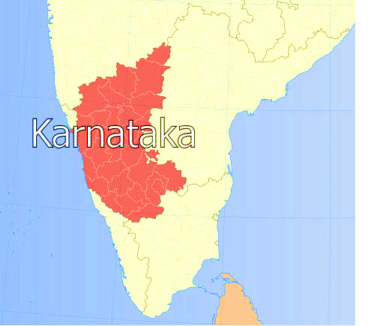
(Bildquelle: PlaneMad/Wikipedia. -- CC-by-sa)

(Bildquelle: PlaneMad/Wikipedia. -- CC-by-sa)
Zitierweise / cite as:
Hodson, Thomas: An elementary grammar of the Kannada, or Canarese language. --25. Syntax of Verbs (§§ 217 - 222). -- Fassung vom 2011-08-26. -- URL: http://www.payer.de/hodson/hodson25.htm
First published as: Hodson, Thomas: An elementary grammar of the Kannada, or Canarese language ; in which every word used in the examples is translated, and the pronunciation is given in English characters. -- 2. ed. -- Bangalore : Wesleyan Mission Press, 1864. -- 128 p. ; 23 cm.
First time published here: 2011-08-26
Revisions:
©opyright: Public domain
This text is part of the section Sanskrit und Indien of Tüpfli's Global Village Library
If you don't get the diacritics displayed, install a Unicode font like Tahoma.
217. The verb must agree with its nominative case in gender, number and person; as,
218. When the nominative is a collective neuter noun, the verb is frequently put in the singular number, even though the noun has the plural form; as,
219. When there are several nominatives of different genders, if one of the nominatives be masculine, the verb will be masculine, but may agree with the last nominative; as,
220. If the nominative consist of two or more personal pronouns, and one of them be of the first person, the verb must be of the first person plural; as,
221. When the nominative is a personal pronoun, it is often omitted, the person being determined by the termination of the verb; as,
222. In colloquial speech the termination ನು nu, is frequently dropped, except in the second future tense; as,
To 26. Syntax of Gerunds (§§ 223 - 231)